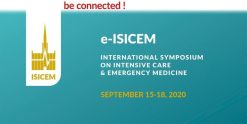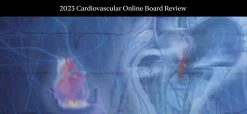The Passmachine Infectious Disease Board Review Course 2018 (Videos)
$20,00
This Product is shared via google drive download link, So please share your correct Gmail id while placing the order .Please note that there are no CME points or certificate associated with this course Samples for Courses Can be found here : Free Samples Here!
Description:
Intended Audience: Infectious Disease Physicians
Learning Objectives:
Upon completion of this program, participants should be able to:
- Identify clinical management and treatment of infectious diseases
- Demonstrate the ability to diagnose several global infectious diseases
- Understand key differential diagnostic strategies including important noninfectious etiologies
- Understand treatment a management of several parasites including protozoans and helminthes
- Demonstrate increased knowledge of principles and practice in Infectious Disease, including: epidemiology, bioterrorism, viral disease, bacterial infections, immunology, STIs, fungi, parasites, and mycobacteria
Designation Statement:
Online Course V3.1,
Release Date January 21, 2018,
Termination Date January 20, 2021
The PeerPoint Medical Education Institute designates this enduring material for a maximum of 48.5 AMA PRA Category 1 Credits™. Physicians should claim only the credit commensurate with the extent of their participation in the activity.
HIGH-YIELD CONTENT
LASER-FOCUSED LECTURES: The Pass Machine Infectious Disease board review course will help you master the ABIM® exam material quickly and easily. This course features a comprehensive library of short video lectures that are precisely aligned to the Infectious Disease Certification and Infectious Disease MOC exam blueprints. This way, you’ll focus on all of the exam topics and keywords with no wasted effort.
THE “QBL” METHOD: “Question-Based Learning” ensures that your review is 100% relevant to the ABIM® Infectious Disease exam. This proven method works by pairing multiple choice questions with related lectures, allowing you to review a topic before answering the corresponding question.
BOARD-EXPERIENCED FACULTY: The Infectious Disease Certification and Infectious Disease MOC courses feature board-certified faculty experienced in teaching Infectious Disease board exam preparation. Thus, every lecture is up-to-date, medically accurate and entirely board-relevant.
INFECTIOUS DISEASE STUDY GUIDE: This course companion makes it easy to follow along with lectures, take notes, and study offline. The PDF includes the complete course syllabus, with all referenced slides, photos, illustrations, and infographics.
Topics :
- 01A Cardiovascular Infections Diagnosis of Acute Pericarditis and Vascular Infections
01B Cardiovascular Infections Native Valve Endocarditis, Diagnostic Approach, and Differential Diagnosis of Endocarditis
01C Cardiovascular Infections Prophylaxis of Infective Endocarditis, Prosthetic Valve Endocarditis, and Infection of Pacemakers
02A Gram-Positive Bacteria Important Association with Streptococcal Infections
02B Gram-Positive Bacteria Severe Staphylococcal Infections and Classification of Streptococci
03A Management of Antibiotic Resistant Gram-Positive Infections Mechanism of Resistance, Lab Diagnosis, and Antibiotic Management
03B Management of Antibiotic Resistant Gram Positive Infections Gram Positive Antibiotics
04A CNS Bacterial Infections Acute Bacterial Meningitis, Empiric Antibiotic Therapy, Antibiotics That Cover Listeria, and Etiology and Management of Meningitis and Neurosurgery
04B CNS Bacterial Infections Brain Abscess and CNS Shunt Infection
05A Respiratory Bacterial Infections Empyema of Pleural Effusion, Non-Resolving Pneumonia, and Pertussis
05B Respiratory Bacterial Infections Pitfalls in Diagnosis and Management of CAP and Ventilator Associated Pneumonia
06A GI Tract Infections Common Etiologies of Food-Borne Illness, Uncommon Pathogens, and Non-Infectious Etiology of Food-Borne Illness
06B GI Tract Infections Helicobacter Pylori and Management of Drug Resistance and Clostridium Difficile
07A Intraabdominal Bacterial Infections Etiology and Management of Liver Abcess, Cholangitis and Cholecystitis, and Complications of Acute Pancreatitis
07B Intraabdominal Bacterial Infections Peritonitis and Post-Surgical Wound Infection
08A Bacterial Skin and Soft Tissue Infections Infections After Water Exposure, Aeromonas Association with Leeches, and DD
08B Bacterial Skin and Soft Tissue Infections Staphylococcal and Streptococcal Infections, Necrotizing Fasciitis, Tetanus, and Infections Due to Bites
09A Management of Antibiotic-Resistant Gram-Negative Infections I
09B Management of Antibiotic-Resistant Gram-Negative Infections II
10A Typhoid Fever and Melioidosis
10B Bacterial Zoonoses
11A Higher Bacteria
11B Spirochete Infections
12A Severe ENT Infections Complicated Sinusitis Including Invasive Fungal Sinusitis and Mandibular Oseoradionecrosis in Head and Neck Cancer Patients
12B Severe ENT Infections Diphtheria, Neck Space Infections, and Malignant Otitis Externa
13A Sepsis and Septic Shock
13B Approach to Fever in the Hospital and Classic FUO Including Non-Infectious Etiologies
14A Acute Febrile Illness With Rash
14B Non-Infectious Etiologies of Fever and Rash
15A Syphilis and Other Ulcerative STIs
15B Non-Ulcerative STIs and Complications of STIs
16A Natural History, Prevention, and Post-exposure Prophylaxis
16B Epidemiology, Diagnosis, and Acute HIV Infection
17A Antiviral Therapy Initial Regimens, First Regimen Failure, and Major Adverse Effects of ART
17B Antiviral Therapy Major Drug Interactions and HLA B-5701 and Co-receptor Tropism
18A Opportunistic Infections Major OIs I
18B Opportunistic Infections Major OIs II and IRIS
18C Opportunistic Infections OI Prophylaxis
19A Malignancy Associated With HIV and AIDS AIDS-Defining Malignancy and Non-AIDS Defining Malignancy
19B Malignancy Associate With HIV and AIDS Prevention of Malignancy in HIV
20A Coinfections and Other Complications of HIV-AIDS Coinfection with Hepatitis B and Hepatitis C and Coinfection with Tuberculosis
20B Coinfections and Other Complications of HIV-AIDS Other HIV Issues, Cardiovascular Complications, and Other Metabolic Complications
21A Management of Infections in Pregnancy I
21B Management of Infections in Pregnancy II
22A Dengue, Yellow Fever, Chikungunya, and Zika
22B Hantaviruses
23A Hemorrhagic Fevers Flaviviruses and Bunyaviridae
23B Hemorrhagic Fevers Arenaviruses and Filoviruses
24A Herpes Virus Infections CMV, EBV, VZV, and HSV
24B Herpes Virus Infections HHV-6, HHV-8, and Herpes Simiae B Virus
24C Herpes Virus Infections Herpesviridae in Immunocompromised Hosts
25A Viral Respiratory Infections Influenza With Prevention and Parainfluenza and Other Common Respiratory Viruses
25B Viral Respiratory Infections SARS and MERS and Avian Influenza
26A Childhood Viruses in Adults and Emerging Viruses I
26B Childhood Viruses in Adults and Emerging Viruses II
27A Ehrlichiosis and Anaplasmosis
27B Rickettsia and Orientia
28A Tuberculosis Monoinfection
28B Tuberculosis Mycobacteriology
29A Non-Tuberculosis Mycobacteria Rapid Growers, M. avium Complex, and M. kansasii
29B Non-Tuberculosis Mycobacteria and Leprosy M. marinum, M. hemophilum, M. ulcerens, and Leprosy
30A Intestinal Protozoa, Trichomonas, Toxoplasmosis and Free-Living Amebae I
30B Intestinal Protozoa, Trichomonas, Toxoplasmosis and Free-Living Amebae II
31A Invasive Intracellular Protozoa Malaria, Babesiosis, and American and African Trypanosomiasis
31B Invasive Intracellular Protozoa Visceral and Cutaneous and Mucocutaneous Leishmaniasis
32A Trematodes Schistosomiasis, Opisthorchis, and Fasciola
32B Cestodes Tapeworms, Cysticercosis, and Echinococcosis
33A Nematodes Filariases, Guinea Worm and Trichinosis
33B Nematodes Intestinal Nematodes
34A Endemic Fungi Histo, Blasto, and Cocci and Paracocci
34B Endemic Fungi Sporotrichosis, Penicillium Marneffei, and African Histo Duboisii
35A Opportunistic Fungal Infections I
35B Opportunistic Fungal Infections II
36A Antifungal Agents Amphotericin B and Azole Antifungal Agents
36B Antifungal Agents Echinocandins, Flucytosine, and Drug Interactions
37A Primary Immune Deficiency
37B Non-HIV Related Secondary Immune Deficiency
38A Routine Immunizations and Pre-Travel Immunizations
38B Rabies Vaccine and Post-Exposure Prophylaxis
39A Neutropenia and Approach to Neutropenic Fever
39B Hematopoietic Stem Cell Transplantations
40A Infections in Solid Organ Transplantation
40B Infections with Biologicals for Treatment of Autoimmune and Idiopathic Diseases
41A Bioterrorism Anthrax, Botulism, and Smallpox
41B Bioterrorism Plague and Tularemia
42A Hospital Epidemiology Preventing Infections in the Hospital Environment
42B Hospital Epidemiology Surveillance of HAIs and Antibiotic Stewardship
43A Infection Control Isolation Precautions and Vaccination of Healthcare Workers
43B Infection Control Prevention of Tuberculosis Transmission and Hand Hygiene
Related products
CRITICAL CARE / EMERGENCY MEDICINE
CRITICAL CARE / EMERGENCY MEDICINE
International Symposium on Intensive Care & Emergency Medicine ( ISICEM ) 2020
CRITICAL CARE / EMERGENCY MEDICINE











